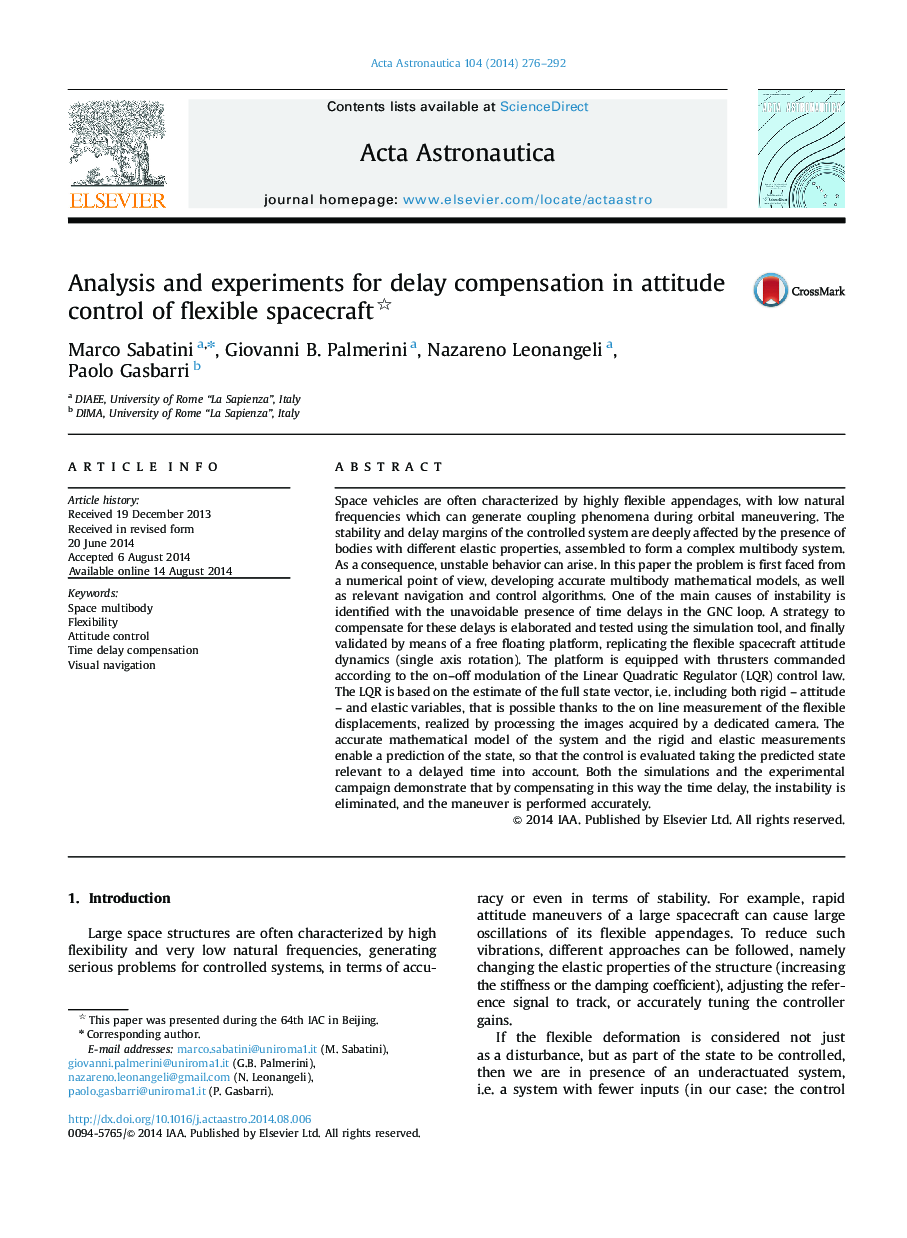| Article ID | Journal | Published Year | Pages | File Type |
|---|---|---|---|---|
| 10680792 | Acta Astronautica | 2014 | 17 Pages |
Abstract
Space vehicles are often characterized by highly flexible appendages, with low natural frequencies which can generate coupling phenomena during orbital maneuvering. The stability and delay margins of the controlled system are deeply affected by the presence of bodies with different elastic properties, assembled to form a complex multibody system. As a consequence, unstable behavior can arise. In this paper the problem is first faced from a numerical point of view, developing accurate multibody mathematical models, as well as relevant navigation and control algorithms. One of the main causes of instability is identified with the unavoidable presence of time delays in the GNC loop. A strategy to compensate for these delays is elaborated and tested using the simulation tool, and finally validated by means of a free floating platform, replicating the flexible spacecraft attitude dynamics (single axis rotation). The platform is equipped with thrusters commanded according to the on-off modulation of the Linear Quadratic Regulator (LQR) control law. The LQR is based on the estimate of the full state vector, i.e. including both rigid - attitude - and elastic variables, that is possible thanks to the on line measurement of the flexible displacements, realized by processing the images acquired by a dedicated camera. The accurate mathematical model of the system and the rigid and elastic measurements enable a prediction of the state, so that the control is evaluated taking the predicted state relevant to a delayed time into account. Both the simulations and the experimental campaign demonstrate that by compensating in this way the time delay, the instability is eliminated, and the maneuver is performed accurately.
Related Topics
Physical Sciences and Engineering
Engineering
Aerospace Engineering
Authors
Marco Sabatini, Giovanni B. Palmerini, Nazareno Leonangeli, Paolo Gasbarri,
